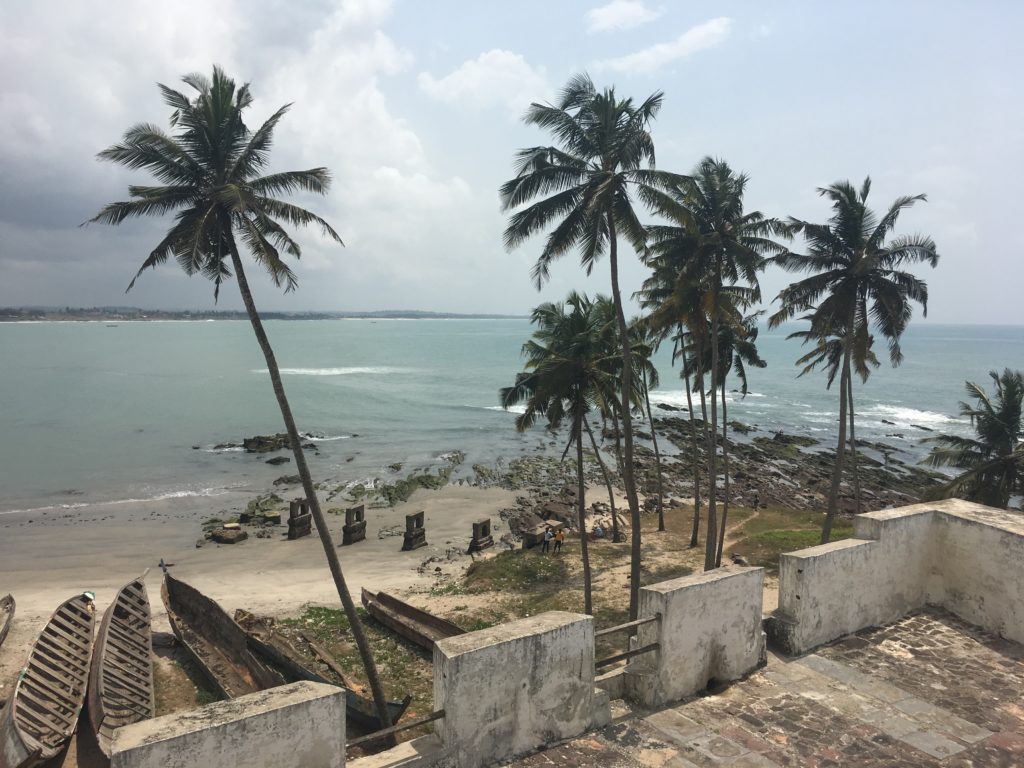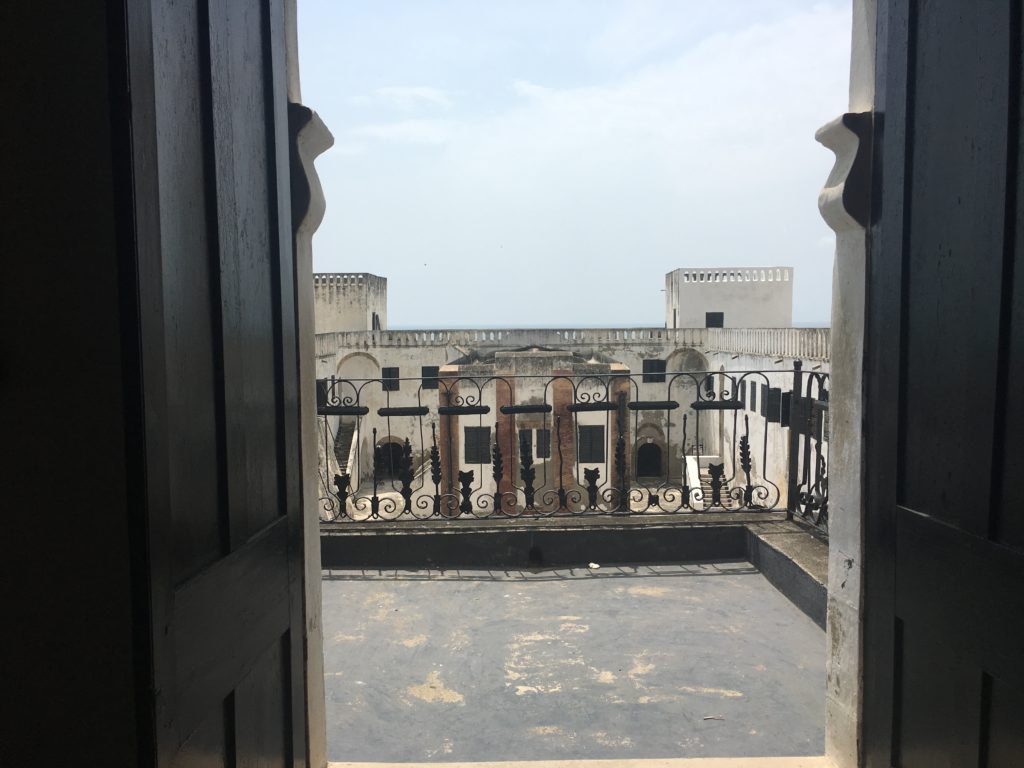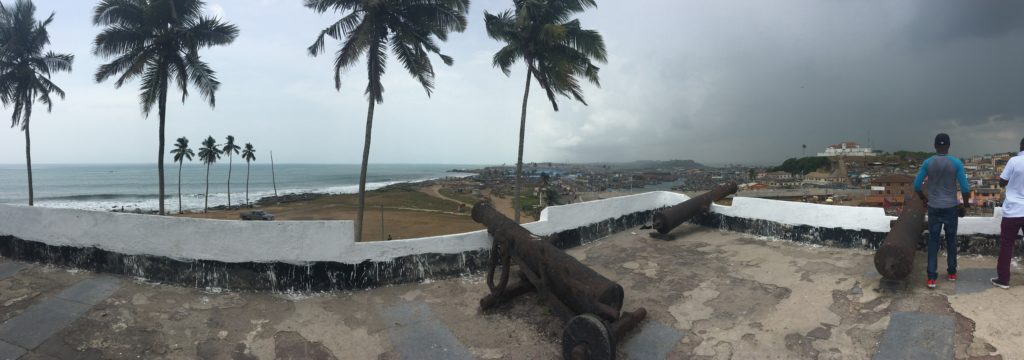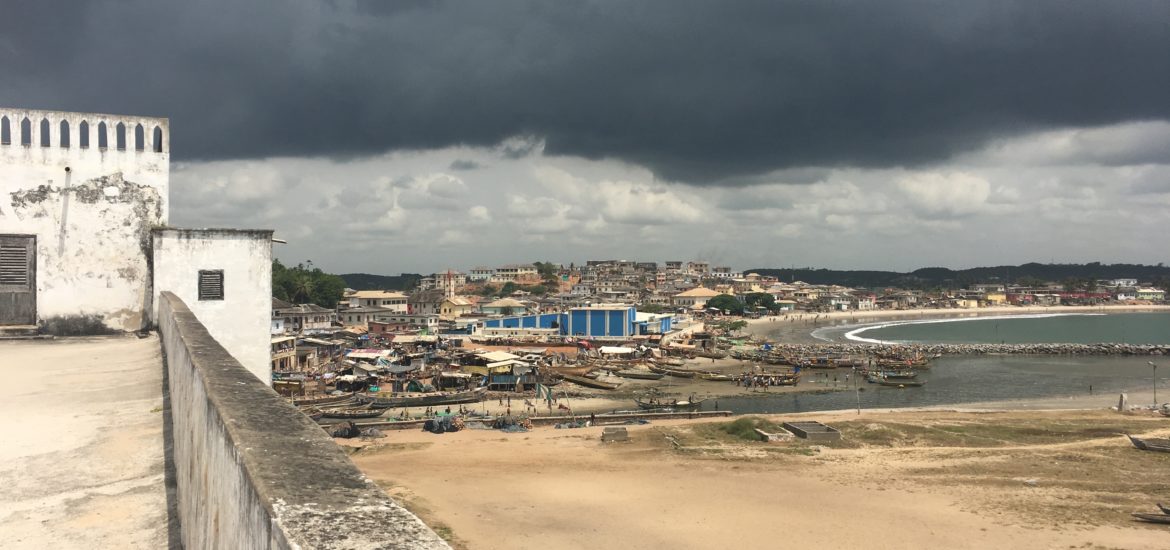The weekend after Asa Baako I got a last-minute message from Nicky, one of the aforementioned five VSO volunteers in Ghana. She was headed to Cape Coast for training the following week, and wanted to know if I was interested in meeting up for the weekend. Slave castles aren’t particularly at the top of my ‘want to go see’ list, but I felt like they were something I had to visit while I was in Ghana.
The slave trade in Ghana
I think some of this sense of obligation comes from growing up in the United States, and the certain amount of navel gazing and apology that was embedded into my liberal Massachusetts social studies classes. Compounding my concept of the slave trade framed in this sort of ‘bad backwards south vs abolitionist North and intelligentsia in Concord’ narrative, there’s also all my recent Ghana-themed reading by Yaa Gyaasi and Maya Angelou and Taiye Selasi and resulting confusion about how a people who captured and sold off so many of their own people must view their history.

The perplexing thing is, I don’t think Ghanaians go in for the same sort of self-flagellation that we do in American history classes. Perhaps part of it is a general ‘blame it on the colonial power’, concept, part of it, a sense that the descendants of those who were snatched, raped, and sold have ended up with the upper hand in developed America. But this only holds until you reconsider that the one-time chiefs and colluders with the British probably graduated into the Ghanaian elite at some point in the colonial period, and have thus amassed most of the wealth. It’s their descendants who are probably living the glittering cosmopolitan life of Accra with uber drivers, music awards, and 30 cedi cocktails so far from the average 3.50 spend a day. Just as British nobility and upper class society can trace a lot of wealth to slave trade and exploitation, you have to wonder if the same is true for many Ghanaian elites.
In any case, Cape Coast in Ghana is the larger of two neighbouring towns, both major focal points in the history of the salve trade in West Africa. The older of the two is Elmina Castle, the oldest European structure in sub-Saharan Africa. Begun by the Portuguese in 1482 as a trading fort, it was taken over by the Dutch who quickly transformed it into a powerhouse for the transatlantic slave trade. The English erected another castle in 1610 a few scant miles down the coast in Cape Coast. Elmina could hold about 1.5 thousand slaves at a time; Cape Coast about 2.5 thousand, and together they channelled a massive percentage of captured West Africans who were marched from Togo, Burkina Faso, and the interior of Ghana, down to the ships waiting off shore.

About 1/3 of the captured would-be slaves died during the journey on foot. Another 1/3 died in the dungeons of the castles, waiting for a ship to take them across the sea. An estimated 2-5 million survived to depart Cape Coast, and another 10-15% died on the boats. Surprisingly (or perhaps not, depending on your background), the majority of slaves did not go to the Southern United States, but ended up in South America.
There’s a short (2 minute) UNESCO documentary about the castles here
It makes you wonder if perhaps it isn’t slavery in and of itself that has had such a perversion on the US, given the outsize hold it seems to have on the national conscience, but the system of entrenched racial inequality and strictures that accompanied it.
There’s even a whole subset of tourism here, of African Americans returning to try and trace their roots. Maya Angelou called it struggling to return to Mother Africa, but never quite fitting in (to badly paraphrase).

I don’t think Brazilians are frequent tourists here. It’s a peculiarly American action. And when you see ‘returnee’ African Americans, it’s clear they’re American. It’s in their clothes, the way they move…and it’s also in their skin – juxtaposed with Ghanaians, you can clearly see just how much mixing has gone on over the centuries.
And it’s slightly heart-breaking that they don’t feel they have a place in the US, and they’ve arrived in a country their ancestors may or may not have ever seen to lay wreaths in the dungeons of former slave castles. But perhaps this is just a typical American searching for your roots, and it’s not really too different from families of ‘Italians’ touring around Rome and eating tourist lasagna for a week one summer.
So there’s lots of political, social, and historical implications and stuff to mull over in Cape Coast, but it’s also a lovely stretch of seaside communities, one of the largest universities in Ghana, and a fair-sized expat conglomeration of tourists, volunteers, and misfit returnees. There’s also been some national debate about the overemphasis on the area’s slave history to the detriment of anything else, but I think they seem to have decided to go where the money is, at least for now.
